Jerry Reed and his sister had a hard start in life. His parents separated four months after his birth. Both children lived in orphanages and foster homes for their first seven years. Jerry did have visits with his grandparents and at an early age told them, “I am gonna’ be a star and go to
Reed not only starred in Smokey and The Bandit, but also wrote the theme song; East Bound and Down.
It was in 1958 when Jerry Reed was recording rock-a-billy songs that a Capitol Records producer named Bill Lowery took notice of his song, Crazy Legs. Lowery had Gene Vincent cover the song and he signed Jerry Reed to a contract as a staff artist and writer. This was with Lowery’s company National Recording Corporation.
1959 was a busy year for Reed. He got married. Within a few years two daughters were born to him and his wife. In that same year he joined the United States Army (we had compulsory service at the time) and served two years.
He moved his family to
In 1967 Reed recorded Guitar Man. Elvis Presley heard the song and decided to record it. Reed also recorded a comic tribute to Elvis called Tupelo Mississippi Flash. It became a top 20 hit song.
When Elvis went to
Elvis sent his producer to find Reed and get him in the studio. Elvis’s studio players were baffled on how Jerry Reed played the guitar part. Jerry explained to them, 'Well, if you want it to sound like that, you're going have to get me in there to play guitar, because these guys (you're using in the studio) are straight pickers. I pick with my fingers and tune that guitar up all weird kind of ways.'
Elvis loved the part and kept Reed at the session to cut U.S. Male and Big Boss Man. The following year Elvis hired Reed again to record a few songs on his next album. And again in 1971 Jerry Reed got the call from The King for another album session.
In 1970, Jerry Reed got another break with his song Amos Moses. This charted in country, rock, funk and cajun markets. By then Chet Atkins had struck up a life long friendship with Jerry. They recorded the album called Me & Jerry.
His biggest break came when he became a regular on The Glen Campbell Goodtime Hour. He released another hit in 1971 called When You’re Hot, You’re Hot.
In 1972, Atkins and Reed teamed up for a second Me & Jerry album. Chet dubbed him a CGP (certified guitar player) which is an honor given to only four people and one other posthumously.
The appearance in the cartoon show ‘Scooby Doo’ may have been responsible for Reed’s acting career.
He had befriended Burt Reynolds and appeared in a film called W.W. and the Dixie Dancekings. He next acted in Gator and then became a star in all three Smokey and the Bandit films. For a short time Jerry Reed hosted his own variety TV show.
In 1980 Reed re-recorded Guitar Man as a hotter version. He continued acting and recording. He did more songs with Atkins. Although he was not on the session, Jerry Reed came up with the ascending and descending guitar licks that open Glen Campbell’s hit Southern Nights.
For the next twenty five years, Jerry Reed had successful recordings, co-starred in motion pictures and worked on television. He made public appearances and gave concerts. He recorded one more album with Chet Atkins called Sneakin’ Around.
What set Jerry Reed apart as a guitarist was summed up in his own words, “…I pick with my fingers and tune that guitar up all weird kind of ways.” Other guitarists gave him a nickname; The Claw.
Most finger pickers or thumb pickers use their thumb for the bass line and anywhere from one to three fingers for chords and lead. Jerry just dug his hand in there and made use of all; his thumb and fingers.
He also experimented with different tunings long before most of us gave it a thought. The simplest tuning he used was to tune his guitar down a ½ step.
He also tuned to an open G and made use of dropped D tuning. He may have been the guy that taught Chet how to use the Gmaj7th tuning of D-G-D-G-B-E.
Tunings were one thing that contributed to Reed’s guitar playing, the other was his guitar. Reed’s first good guitar was a Gretsch Chet Atkins Model 6120.
Although he was fond of the guitar, Jerry Reed did not like guitars with steel strings. He said they tore up his fingernails. He generally played nylon string guitars. Before he discovered the Baldwin Guitar, he played a Guild classic guitar. It was possibly a Mark III with a spruce top and a mahogany body. By far his favorite was a guitar sold by The Baldwin Piano Company.
During the guitar boom of the 1960’s,
So the Baldwin Company looked no further than the
The Harmony guitar with the
He took his Baldwin to a
From reading conversations it sounds like Jerry Reed bought a Baldwin amplifier to go along with the guitar. Most videos of Jerry show him with Peavey amplifiers. But Peavey was not in business during the 1960’s. The solid state amplifier advertised with the guitar is the same model that Willie Nelson has been using for his entire career.
It is said that Fender Guitars spent thousands of dollars making a guitar for Reed. Reed always went back to his
Jerry just plugged his guitar into an amplifier and began playing.
Reed once authorized an
Word about the Prismatone pickup spread throughout
Willie Nelson purchased an old Martin N-20 and added a Prismatone pickup.
Jerry searched around to find the lightest guitar strings made, LaBella 820’s.
After Gretsch guitars went out of business, Gibson Guitar Company was courting Chet Atkins. They built a solid body nylon Chet Atkins model called the CE-1. Jerry owned one of these guitars. Jerry also owned a Marcelo Barbero flamenco guitar.
Jerry can be seen with many different guitars. On a Glen Campbell video, both Jerry and Glen are playing Heritage H555 models.
In a 1992 clip from the Jerry Reed Show, he is playing a Fender Telecaster. On the George Jones Show, Reed is playing a Fender classic electric guitar.
An episode of the Porter Wagoner Show has him playing a Gibson Les Paul through an Ampeg amplifier. On an episode of the Barbara Mandrell Show, Jerry is playing a Peavey T-60. On the Glenn Campbell Show, Jerry is playing the obligatory Ovation Classical.
 |
| Jerry with Kirk Sand guitar |
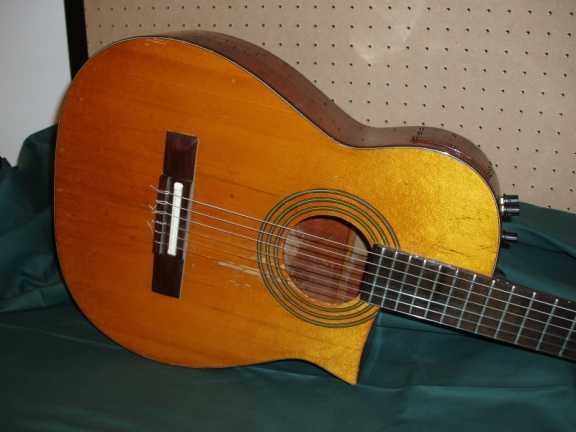 |
| Jerry's guitar given to Paul Yandell |
Jerry gave one of his beloved
Tennessee luthier Mel McCullough was making copies of this guitar. He called them The Clawmaster.
A fellow named Sam Kennedy currently makes what he refers to as The Prismatone II pickups.













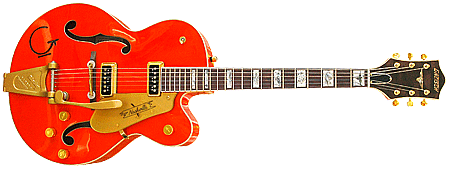




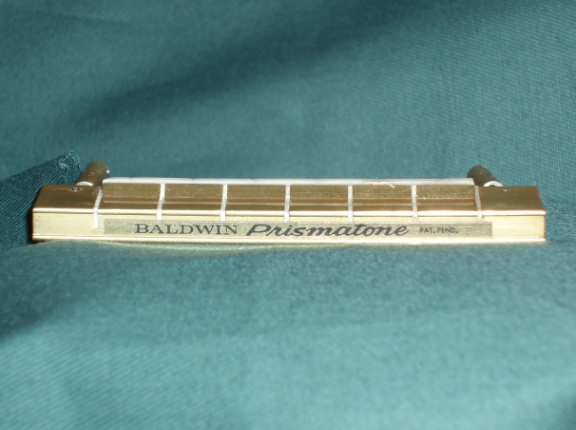


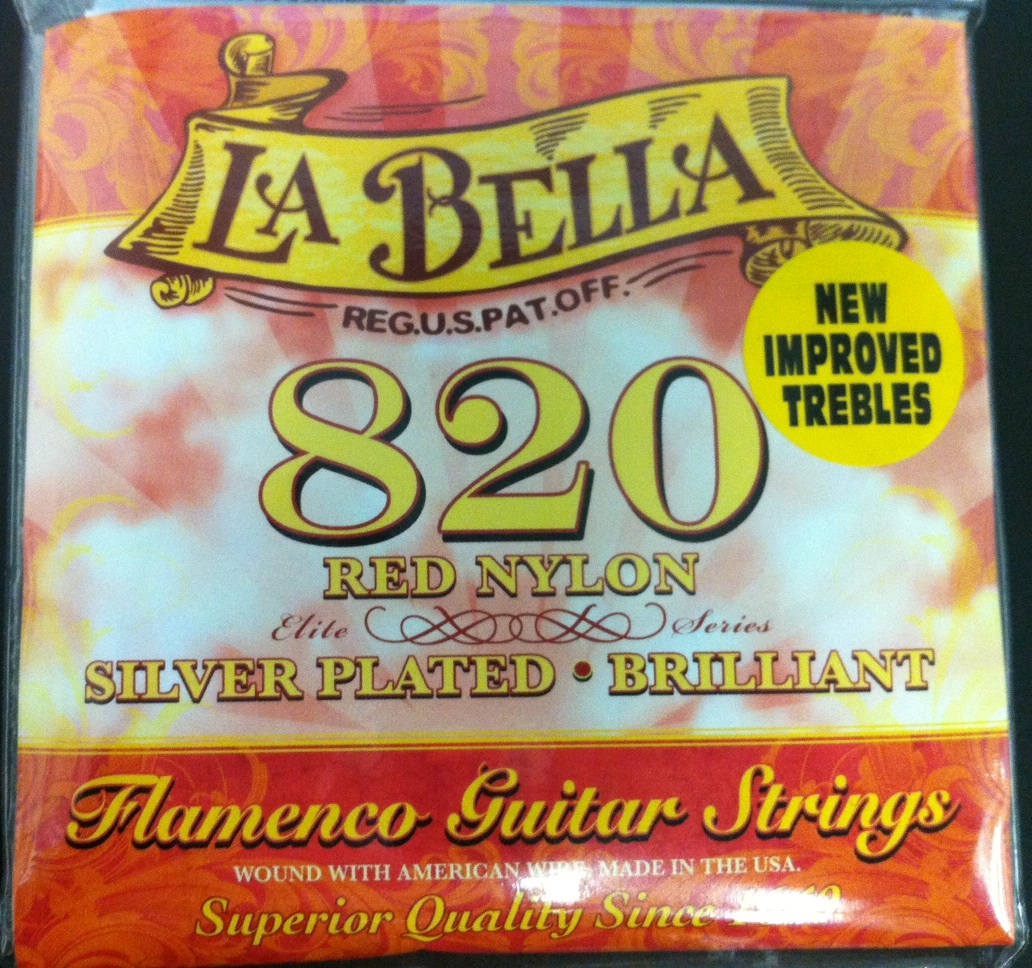




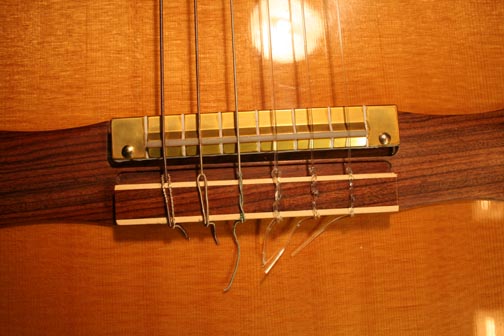
Tidak ada komentar:
Posting Komentar